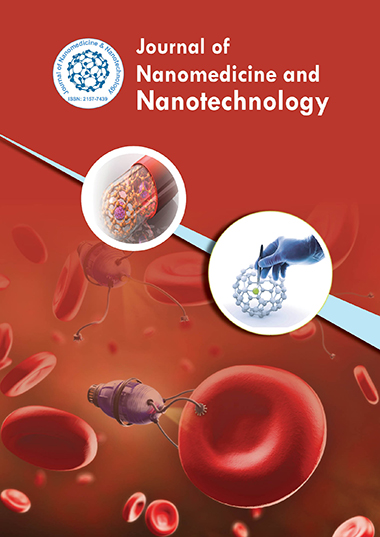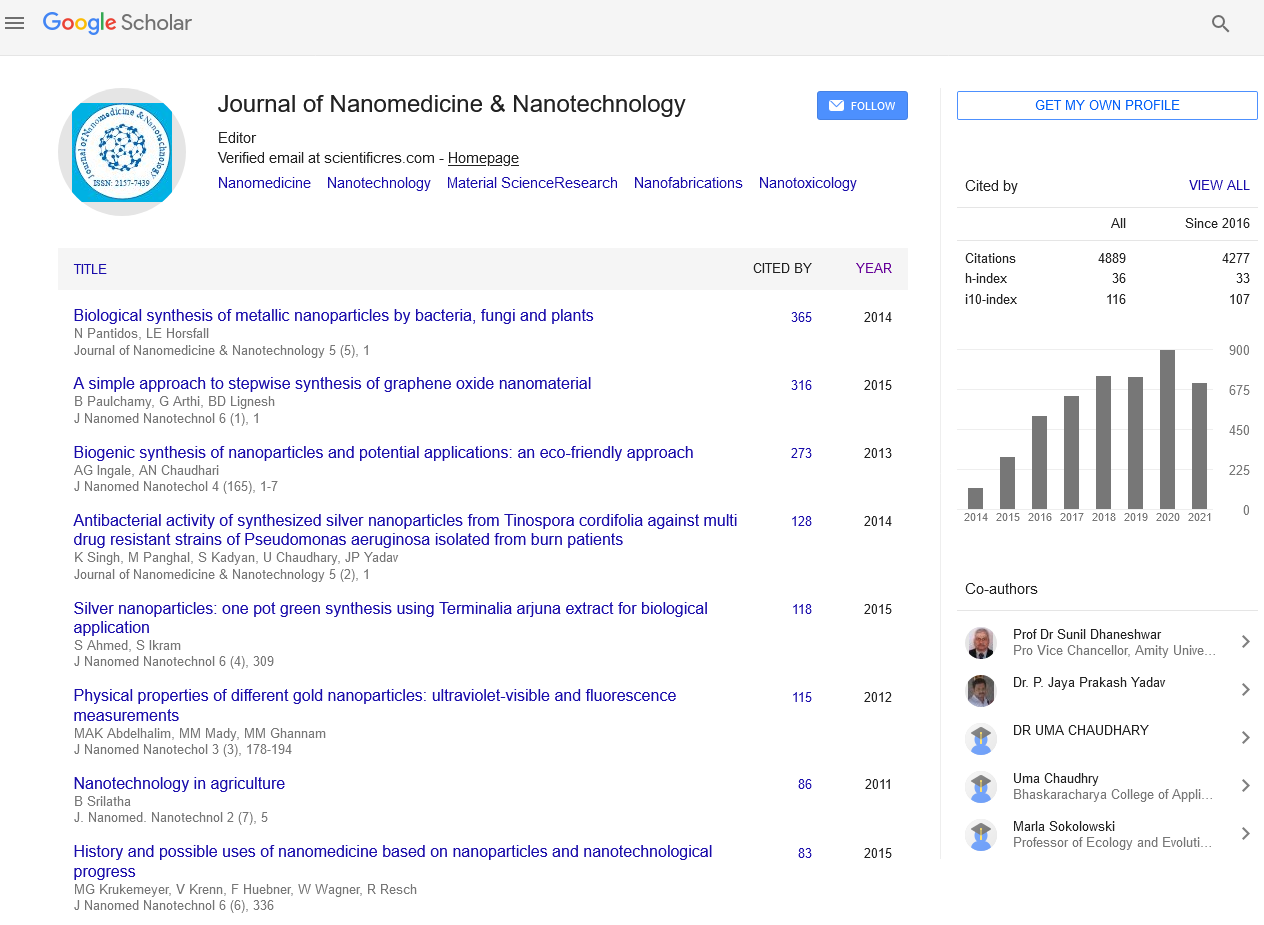Indexed In
- Open J Gate
- Genamics JournalSeek
- Academic Keys
- JournalTOCs
- ResearchBible
- China National Knowledge Infrastructure (CNKI)
- Scimago
- Ulrich's Periodicals Directory
- Electronic Journals Library
- RefSeek
- Hamdard University
- EBSCO A-Z
- OCLC- WorldCat
- SWB online catalog
- Virtual Library of Biology (vifabio)
- Publons
- MIAR
- Scientific Indexing Services (SIS)
- Euro Pub
- Google Scholar
Useful Links
Share This Page
Journal Flyer

Open Access Journals
- Agri and Aquaculture
- Biochemistry
- Bioinformatics & Systems Biology
- Business & Management
- Chemistry
- Clinical Sciences
- Engineering
- Food & Nutrition
- General Science
- Genetics & Molecular Biology
- Immunology & Microbiology
- Medical Sciences
- Neuroscience & Psychology
- Nursing & Health Care
- Pharmaceutical Sciences
The effect of Fe2O3 doping on TiO2 particle/nanotube composite layer for enhancement photovoltaic efficiency of dye-sensitized solar cells
3rd International Conference on Nanotek & Expo
December 02-04, 2013 Hampton Inn Tropicana, Las Vegas, NV, USA
Hyung Wook Choi, Tae Sung Eom and Kyung Hwan Kim
Posters: J Nanomed Nanotechnol
Abstract:
The dye-sensitized solar cell (DSSC) are composed of a dye-adsorbed nanoporous TiO 2 layer on a fluorine-doped tin oxide (FTO) glass substrate, redox electrolytes and a counter electrode. The heart of the system is a mesoporous TiO 2 film composed of nanometer-sized particles possessing a large specific surface area. However, an unusual feature of this kind of DSSCs is the lack of the space charge layer, which separates the injected electrons from the holes in the dye or electrolyte. A unidirectional charge flow with no electron leakage at the interfaces is essential for high energy-conversion efficiency. In this paper, DSSC were constructed by application of Fe 2 O 3 and TiO 2 nanoparticle/TiO 2 nanotube (TNT) composite particles with various percentages. The use of oxide semiconductors in the form of nanorod, nanowires and nanotubes may be an interesting approach to improve electron transport through the film. In addition suitable amount of TNT in the film could provide large surface area for the adsorption of the dye. The Fe 2 O 3 -doped reduced the surface trap states of TiO 2 suppressed the charge recombination, and increased the driving force of electron injection, thereby improved its power conversion efficiency. The impedance results indicate improved electron transport at the TiO 2 /dye/electrolyte interface. This result is attributed to the prevention of electron recombination between electrons in the TiO 2 conduction band with dye or electrolytes. TiO 2 passivating layer was deposited on the substrate by hydrolysis of TiCl 4 aqueous solution. TiO 2 layer was coated on FTO glass by doctor blade method. The dye-sensitized solar cells were fabricated using dye of ruthenium (II)(N719) and electrolyte (I-/I3-)The DSSC based on Fe 2 O 3 /TiO 2 /TNT composite particles hybrids showed a better photovoltaic performance than the cell purely made of TiO 2 nanoparticles. The crystalline structure and morphology were characterized by X-ray diffraction (XRD), scanning electron microscope (SEM). The absorption spectra were measured by UV-vis spectrometer. The conversion efficiency was measured by solar simulator (100 mW/cm2)


